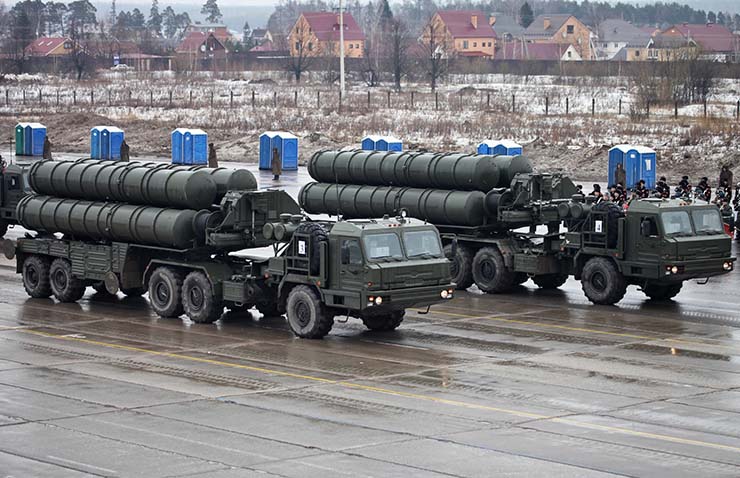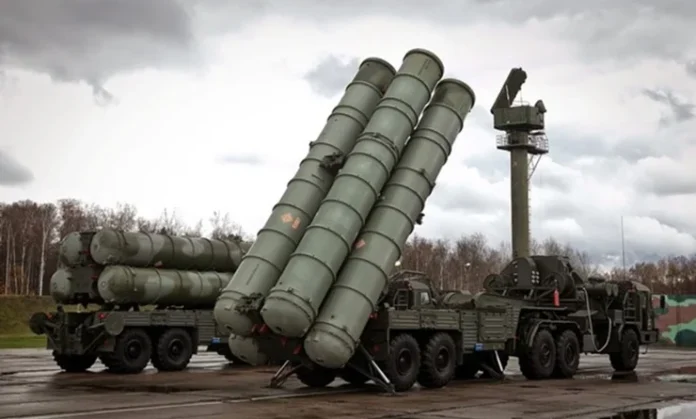India has been looking for an impregnable air dome system since the China-Pakistan unholy alliance cemented over the years, and now, with the deteriorating situation in Bangladesh, a multi-front war scenario is emerging. The Defence Research and Development Organisation (DRDO) is in the final stages of developing its air dome protection system named ‘Project Kusha’ based on Quick Reaction Surface-to-Air Missile (QRSAM), Medium Range (MRSAM) and Long Range (LRSAM) systems, which will be operational by 2026-27. India needs an operational long-range missile system to secure its air space.
India has its air defence based on the Prithvi AD Missile (range 600 km), Advance AD Missile (range 200 km), S-125 Pechora SAM (range 30 km), OSA ak 9k33, Kub 2k12, SA-5 Gammon, Strela 10, Tunguska2k22, SP ZSU 23mm twin barrels/Quad platform, L/60 and L/70 Bofors in its inventory. The indigenous Akash Regiments (range 45 km) and Spyder system from Israel (Python 5 km and Derby 50 km AAD missiles) were added to the arsenal recently. Still, there are huge gaps in the air dome shield.
On October 15, 2016, during the BRICS summit, India and Russia signed an Inter-government Agreement to procure five S-400 Regiments. US administration threatened India with sanctions under the Countering America’s Adversaries Through Sanctions Act (CAATSA). Despite US resistance and threats, India and Russia inked the Rs 40,000 crore ($ 5.5 billion) deal on October 5, 2018. The US offered the Patriot PAC 3 and the shield system but India preferred the Russian system. In March 2021, US Secretary of State Lloyd Austin again warned India to cancel the deal.
Despite US objections, the Indo-Russian deal continued and by November 2021, the deliveries of S-400 units commenced on schedule. By April 2022, the second S-400 regiment was fully deployed. The third regiment was inducted in 2023 and is being deployed in the eastern sector
However, the Indo-Russian deal continued and by November 2021, the deliveries of S-400 units commenced on schedule. By April 2022, the second S-400 regiment was fully deployed. The third regiment was also inducted in 2023 and is being deployed in the eastern sector. However, due to the Russia-Ukraine war, the induction of the fourth and fifth units of S-400 has been delayed till 2025-26. These S-400 units will be under IAF command. The system once fully operational with existing Air Defence resources will act as a force multiplier and shield the Indian air space from hostile aircraft, ballistic cruise missiles and drones.
Russia has had its S-300 P Missile System since the Cold War. The development of the S-400 system began in the late 1980s. The Russian Air Force disclosed it in 1993. Confirmatory trials were completed in early 1999. Dr Alexender Lemansky of Almaz-Antey was the Project Director. The completion of the project was announced in February 2004 after successfully intercepting ballistic missiles by 48N6DM and production began full-scale.
The main reason India suddenly went for the S-400 System was China’s deployment of S-300 P Units in Tibet and Xingjian regions. The Chinese Air Force has placed J-20 Fighters at Lohtan and Lhasa airfields. China has also developed its own Air Defence Shield of HQ 9 batteries
The S-400 Missile system (Nato code SA-21 Growler) includes multiple radars with autonomous detection, identification IFF and targeting system. It consists of anti-air mobile launchers and a command and control centre. It consists of the following missiles for a layered defence:
- 40N6 Missile: It has a range of 400 km plus, and it is based on active radar homing and can intercept multiple aerial targets.
- 48N6DM (E3) Missile: Its range is 250 km and it activates the second layer of defence. It is also based on active homing and it is capable of hitting multiple air targets.
- 9M96: This medium-range surface-to-air missile variant is used for direct impact. Its range is 40 km. It can engage moving targets such as fighters and drones with greater accuracy.
- 9M96E2: A variant of 9M96E, air-to-air variant dealing with low-flying objects. The range is 120 km but descends to low altitude for cruise missile-like intruders.

Each S-400 Regiment is composed of 8 batteries with 9 launchers each. The total number of launchers in the regiment will be 72. Each launcher has 4 Tubes with one missile (total 288 + reserve 98 = 384 missiles). It has a Command and Control Vehicle, Radar Vehicles, TEL trailers and replenishment trailers based on MAZ 8X8 Tank transporters. The set-up is mobile and can move on the road and cross country. The S-400 radars can detect and track the enemy’s 4 and 5-generation aircraft, helicopters, cruise missiles, guided missiles, ballistic missiles, and rockets at 600 km range. A unit can track up to 300 targets and engage multiple targets at various ranges. It can also share information and integrate with other systems like SA-12, SA-23 and S-300. The system gets activated quickly. Once it is operational in watch mode, the response time is 10 seconds.
Turkey procured the S-400 system in 2017 in a $ 2.5 billion deal. It procured 4 batteries, each with 9 launchers, 36 fire units and 192 missiles. Iran has S-300 P units. Egypt and Qatar have also shown interest but deals did not materialise. Saudi Arabia was also interested in buying the S-400 system in 2009 but due to American intervention, the country procured the American THAAD (Terminal High Altitude Area Defence) system. When the Israel-Iran war flared up as a result of the Israeli action in Gaza and Lebanon, the United States supplied THAAD batteries to Israel for air defence against Iranian missiles.
Defence Minister Rajnath Singh, who was in Russia recently for induction of the New Stealth Ship INS Tushil (F 70) in the Indian Navy, met his Russian counterpart and President Putin on December 10 to liaise for early delivery of the remaining two units of S-400 by early 2025
The main reason India suddenly went for the S-400 System was China’s deployment of S-300 P Units in Tibet and Xingjian regions, threatening India’s northern frontiers. The Chinese Air Force also has placed J-20 Fighters at Lohtan and Lhasa airfields. China has also developed its own Air Defence Shield of HQ 9 batteries. HQ 9 is a reverse engineering copy of the S-300 System. China inked a deal with Rosoboronexport for S-400 Units in March 2015. By August 2018, two S-400 units reached China with assurance to be used against Taiwan, not India, but later the deal was cancelled due to US objections.
The S-400 System was first time operationally used in the Russia-Ukraine war when Colonel Oleksandr Oksanchenko’s SU-27 was shot down while taking off from Kyiv airbase on February 25, 2022. Again, an MI-8 of the Ukrainian Air Force was shot down near Horodnia, Chernihiv oblast.

S-400 is considered one of the best air defence systems but it is expensive and many nations cannot afford it. The effectiveness against hypersonic missiles and low-level cruise missiles is also doubtful. Defence Minister Rajnath Singh who was recently in Kaliningrad, Russia, for induction of the New Stealth Ship INS Tushil (F 70) in the Indian Navy, met his Russian counterpart and also the Russian President on December 10, 2024, to liaise for early delivery of the remaining two units of S-400 by early 2025. Russia has also offered to supply the S-500, an upgraded version with a longer range and effectiveness against hypersonic weapons. The Indian Air Force has christened the S-400 Triumf as ‘Sudarshan’ – the ultimate wheel weapon of Lord Krishna.
-The writer is an Indian Army veteran and a defence analyst. He has keen interest in Geo-strategic affairs and writes regularly on internal and external affairs issues related to India and neighbours. The views expressed are personal and do not necessarily reflect the views of Raksha Anirveda

















